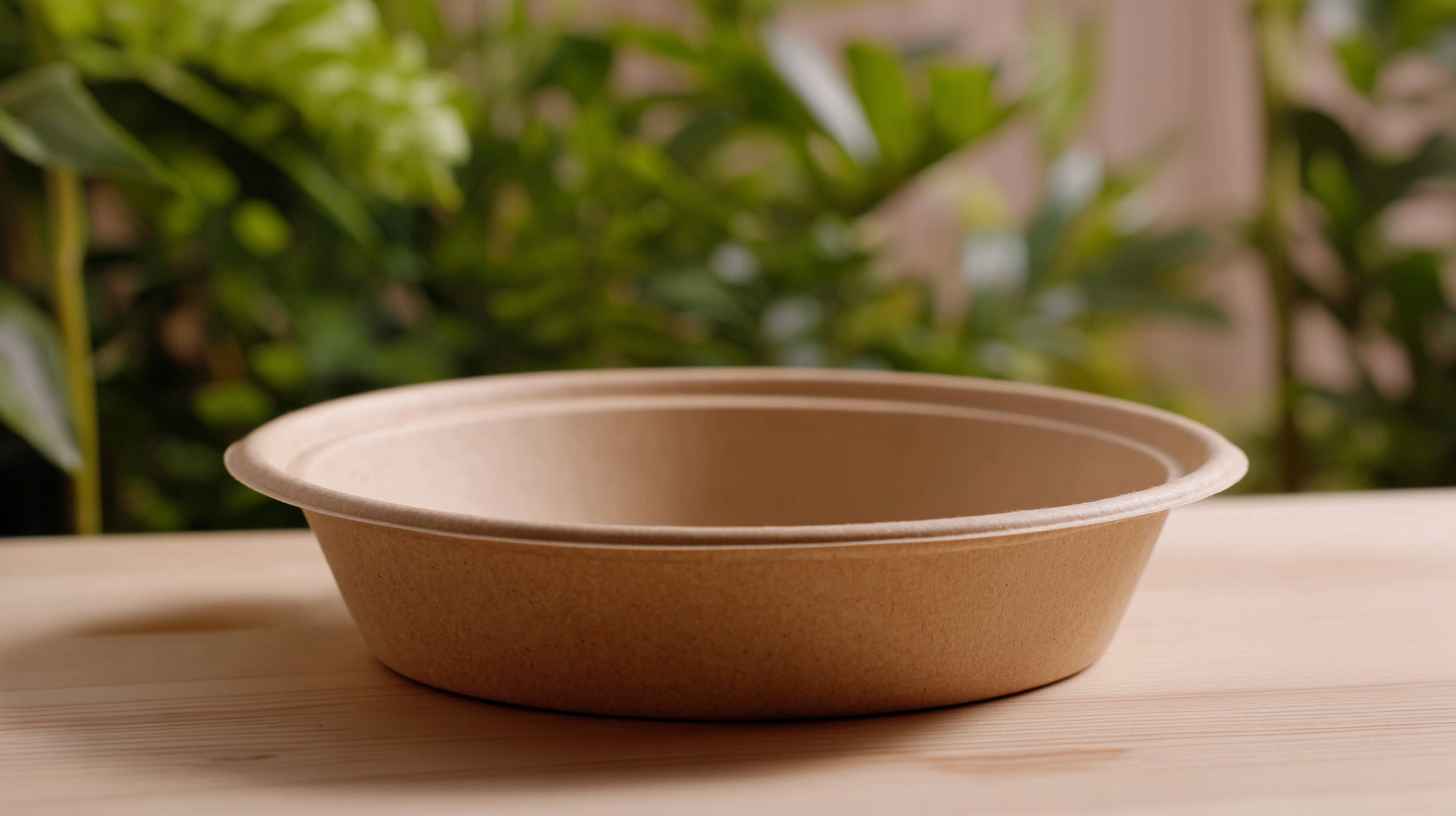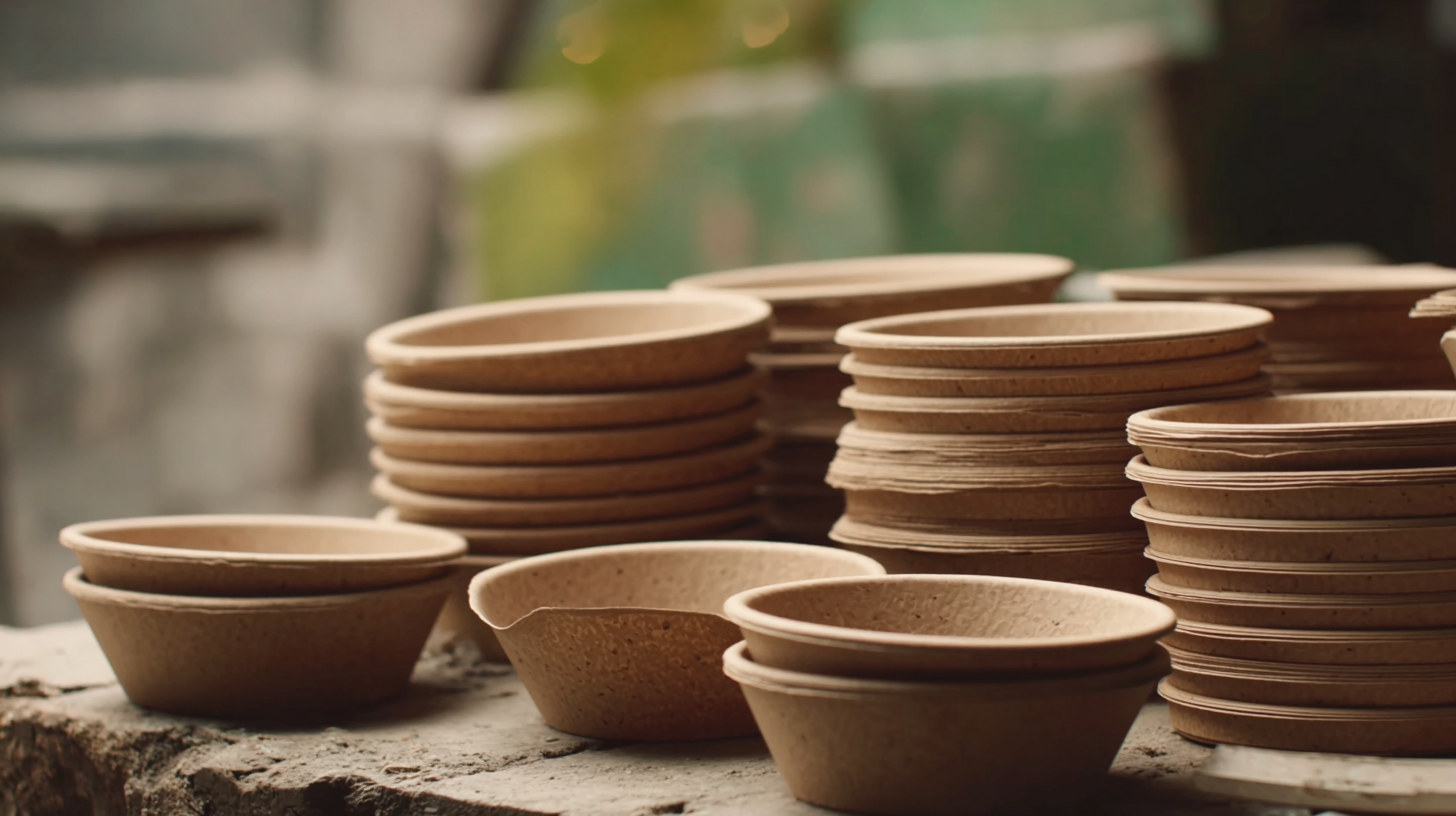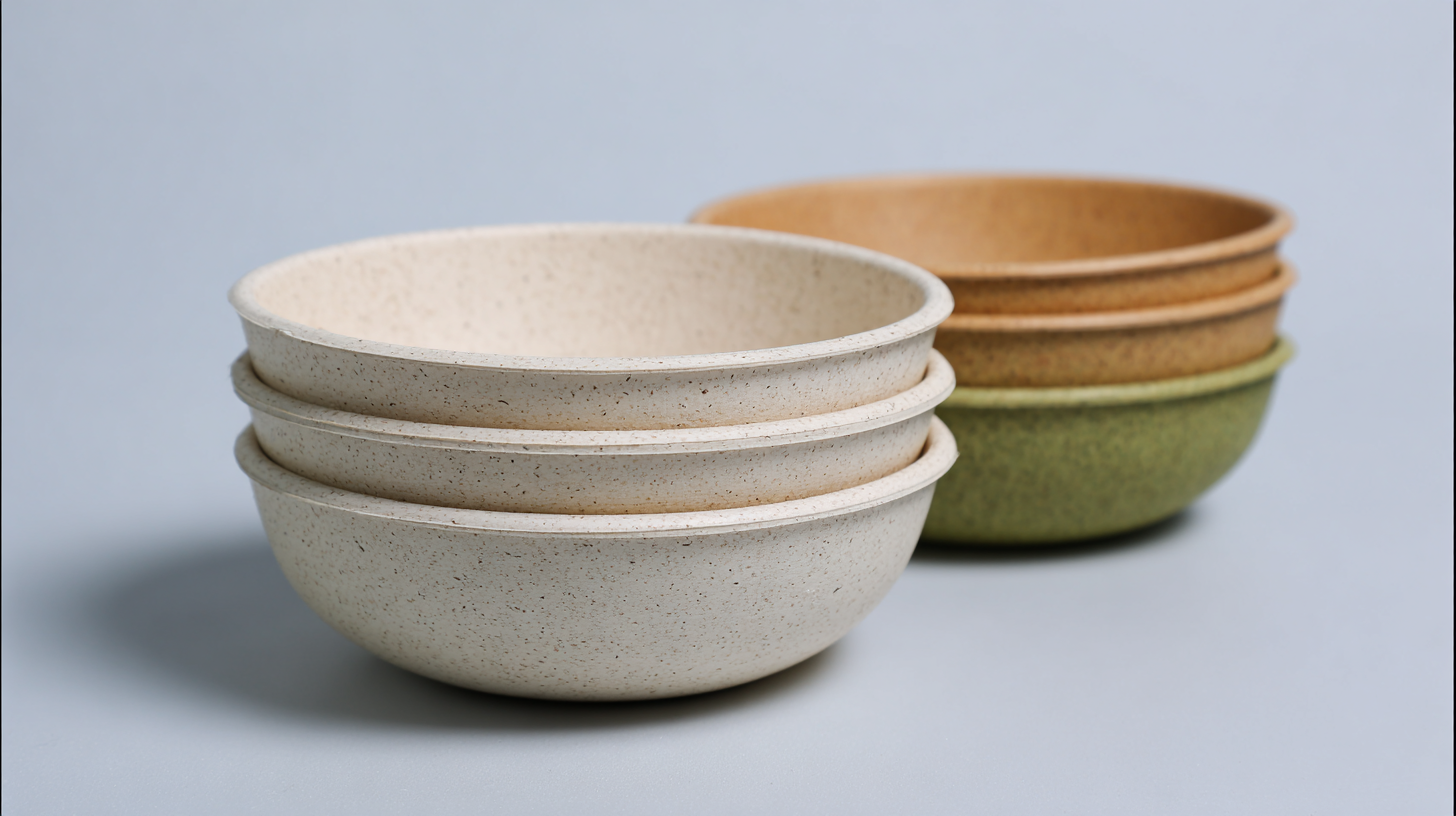In today's world, where sustainability is becoming increasingly vital, the demand for eco-friendly products is surging. According to a report by Grand View Research, the global market for biodegradable tableware is expected to reach USD 4.41 billion by 2025, growing at a CAGR of 5.5%. As consumers are more conscious of their environmental footprint, options like the Eco Friendly Pulp Bowl have gained significant traction. These bowls, crafted from renewable pulp materials, not only address waste concerns but also offer high functionality and stylish designs. China's leading manufacturing experts are at the forefront of this innovation, producing high-quality, sustainable products that meet both consumer needs and regulatory standards.

In this blog, we will explore the features, benefits, and production processes that make Eco Friendly Pulp Bowls an exceptional choice for environmentally conscientious consumers and businesses alike.
In recent years, the demand for eco-friendly products has surged as consumers become increasingly aware of their environmental impact. Eco-friendly pulp bowls, crafted from renewable cellulose fibers, are at the forefront of this trend in sustainable packaging. According to a report by Research and Markets, the global market for sustainable packaging is projected to reach $900 billion by 2026, driven by a growing preference for biodegradable and compostable materials. Pulp bowls not only meet this demand but also offer a sturdy and stylish alternative to traditional plastic and styrofoam containers.
When choosing eco-friendly pulp bowls, it's essential to consider their certifications and material sourcing. Look for products that are certified by organizations like the Forest Stewardship Council (FSC) to ensure sustainability. Additionally, many leading manufacturers in China are adopting innovative technologies to enhance the durability and usability of these bowls without compromising their ecological benefits.
**Tips:** Always check product specifications to confirm that the bowls are compostable in municipal systems. Supporting manufacturers with transparent supply chains can further drive the adoption of sustainable practices in the industry. Lastly, consider the life cycle of the product to evaluate its overall impact on the environment—opting for those with minimal carbon footprints can make a significant difference.

The increase in environmental awareness has significantly shaped consumer preferences, leading to a surge in the popularity of eco-friendly products, particularly in the kitchenware market. Pulp bowls made from natural and renewable resources are at the forefront of this trend. As consumers become more conscious of their ecological footprint, the demand for biodegradable and sustainable alternatives to traditional plastic bowls has skyrocketed. These eco-friendly bowls not only reduce waste but also offer a stylish and functional option for everyday use.
Manufacturers in China are responding to this growing market trend by leveraging advanced technology and innovative manufacturing processes to produce high-quality pulp bowls. These bowls not only meet stringent environmental standards but also excite consumers with their durability and design versatility. With rising public consciousness about sustainability, it’s no surprise that these products are becoming a staple in households aiming to minimize their impact on the planet. As sustainability moves from trend to necessity, eco-friendly pulp bowls are well-poised to meet the evolving demands of the modern consumer.
China is becoming a global leader in molding pulp bowl manufacturing, thanks to its rapid technological advancements. The country's expertise in using natural plant fibers to create durable and eco-friendly products is paving the way for a sustainable packaging revolution. With the molded pulp packaging market projected to grow significantly—from an estimated USD 5.57 billion in 2025 to USD 9.34 billion by 2033—China's innovative approaches are at the forefront of this growth trend.
Recent innovations in molding techniques and the integration of recycled materials are enhancing the strength and functionality of molded pulp packaging. This not only caters to the increasing demand for eco-friendly alternatives but also positions China as a key player in the global market. The rise of the sustainable packaging boom, with molded fiber bowls anticipated to reach USD 291.7 million by 2034, showcases the importance of investing in advanced manufacturing technologies. As consumers become more environmentally conscious, these advancements in China's pulp bowl manufacturing are setting new standards in sustainability and product quality.
The environmental impact of consumer products is an essential consideration in today's eco-conscious marketplace.
 Pulp bowls, crafted from renewable resources, have emerged as a sustainable alternative to traditional plastic and disposable tableware.
A Life Cycle Assessment (LCA) conducted by the Institute of Sustainable Packaging reveals that pulp bowls can reduce carbon emissions by up to 48% compared to conventional plastic alternatives.
This significant reduction is primarily attributed to the lower energy consumption during production and the biodegradable nature of pulp, which breaks down naturally, leaving a minimal ecological footprint.
Pulp bowls, crafted from renewable resources, have emerged as a sustainable alternative to traditional plastic and disposable tableware.
A Life Cycle Assessment (LCA) conducted by the Institute of Sustainable Packaging reveals that pulp bowls can reduce carbon emissions by up to 48% compared to conventional plastic alternatives.
This significant reduction is primarily attributed to the lower energy consumption during production and the biodegradable nature of pulp, which breaks down naturally, leaving a minimal ecological footprint.
Moreover, the analysis highlights that the cultivation of raw materials for pulp bowls plays a crucial role in their environmental profile. According to a report by the International Pulp and Paper Institute, sustainably sourced pulp contributes to better carbon sequestration and supports responsible forestry practices. This means that not only are we reducing waste by using biodegradable products, but we are also promoting healthier ecosystems. By investing in pulp bowls, consumers are making a conscious choice that supports both environmental sustainability and the advancement of eco-friendly manufacturing practices in China.
As we look towards 2025, it's clear that the eco-friendly products industry will play a pivotal role in reshaping consumer behaviors and manufacturing practices. With rapid advancements in sustainable technology and a growing awareness of environmental issues, businesses are increasingly prioritizing eco-friendly solutions. The demand for premium pulp bowls, in particular, is anticipated to soar as these products not only reduce plastic waste but also offer a biodegradable alternative that appeals to environmentally conscious consumers.
**Tips for Embracing Eco-Friendly Trends:**
1. **Educate Yourself:** Stay informed about the latest sustainable materials and practices to make better purchasing decisions.
2. **Choose Quality Over Quantity:** Opt for durable, high-quality eco-friendly products that may have a higher upfront cost but save money and reduce waste in the long run.
3. **Support Local Experts:** By sourcing products from reputable manufacturers, like China’s leading experts in pulp bowls, you can ensure that you're investing in responsibly produced items that contribute to a greener planet.
As the market evolves, embracing eco-friendly products not only aligns businesses with consumer preferences but also supports a global movement towards sustainability. With initiatives focused on reducing environmental impact, the future is bright for those committed to integrating eco-conscious choices into their everyday lives and practices.
| Product Type | Material | Diameter (cm) | Weight (g) | Market Growth Rate (2020-2025) | Eco-Friendliness Rating |
|---|---|---|---|---|---|
| Deep Bowl | Bagasse Pulp | 20 | 50 | 25% | High |
| Shallow Bowl | Bamboo Fiber | 15 | 30 | 20% | Medium |
| Dessert Bowl | Rice Husk | 10 | 25 | 30% | High |
| Soup Bowl | Compostable Pulp | 18 | 40 | 22% | Very High |
